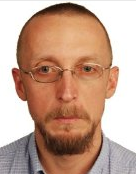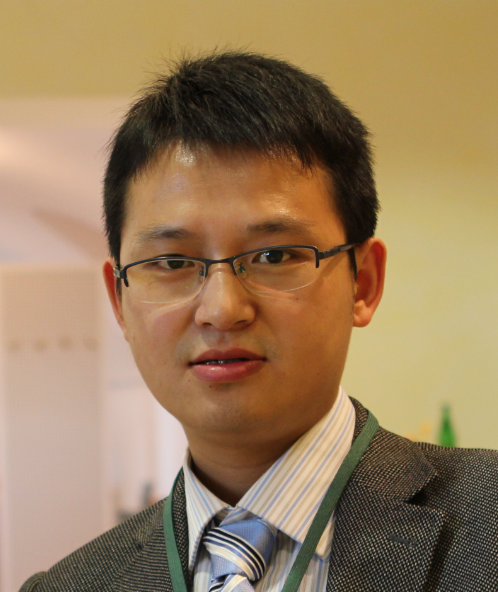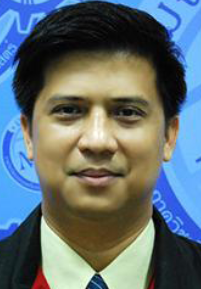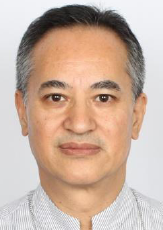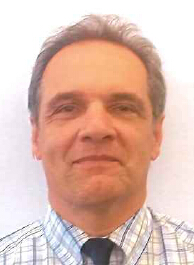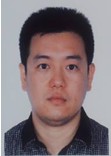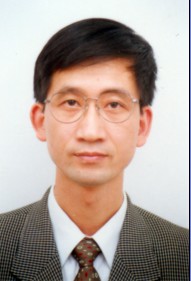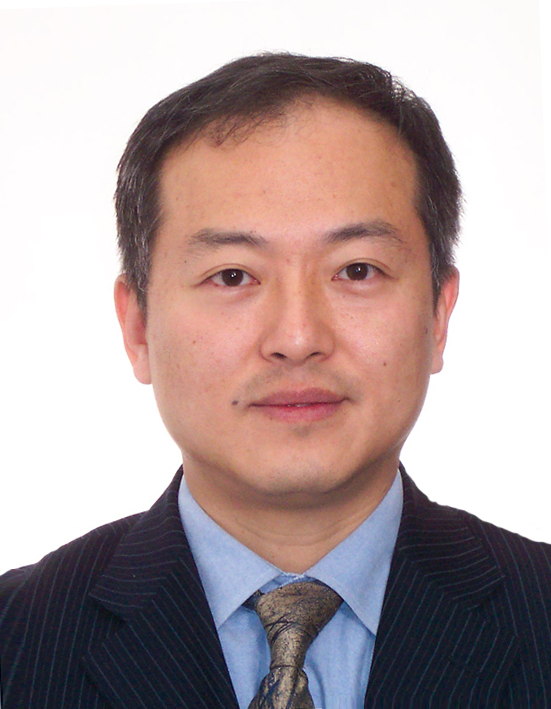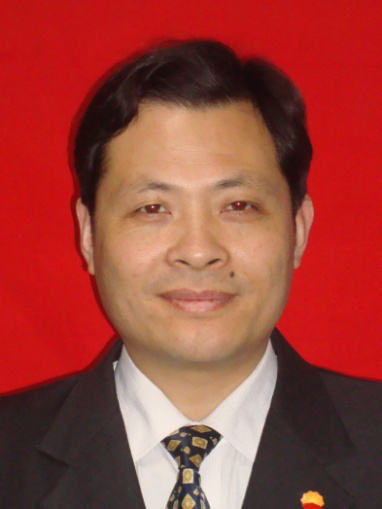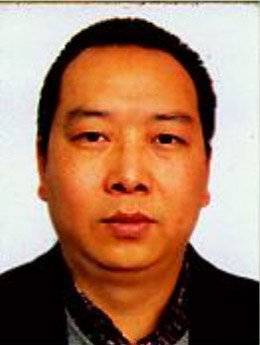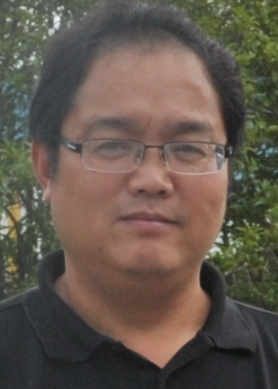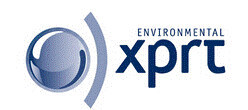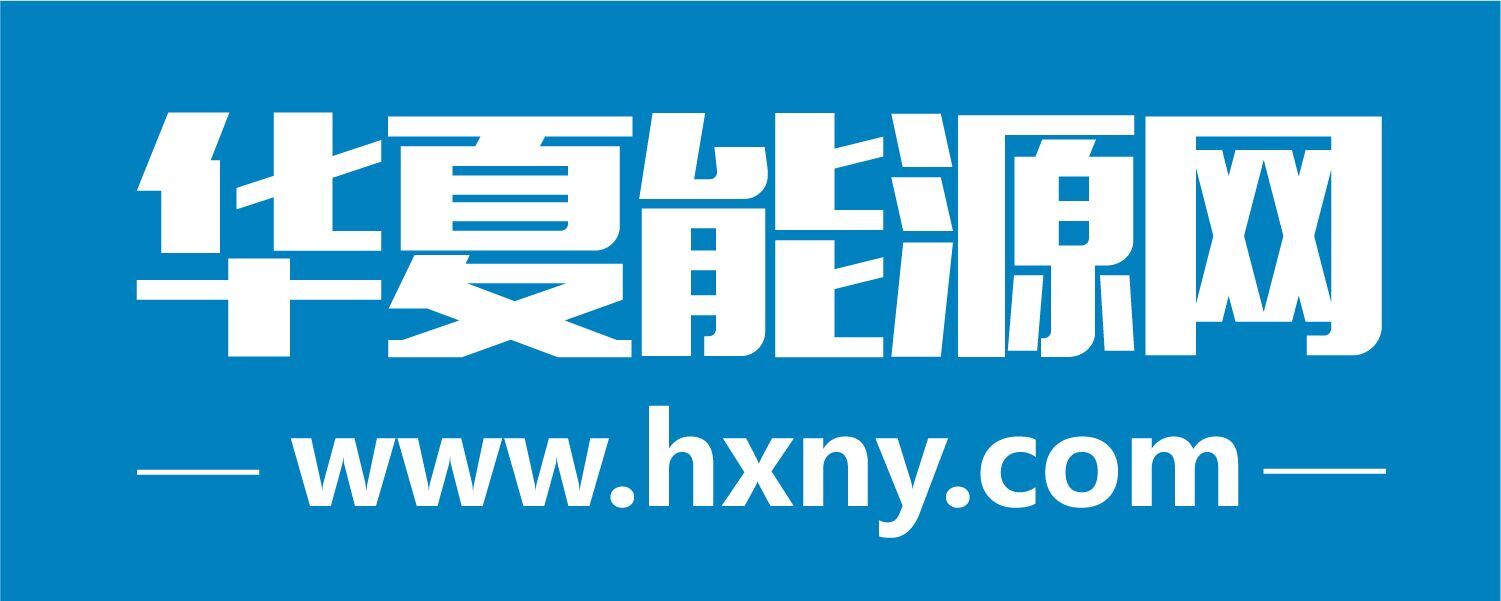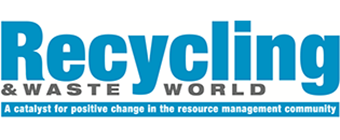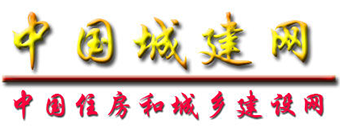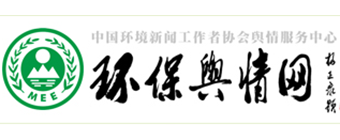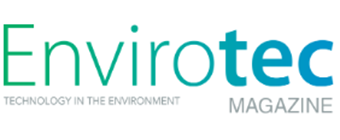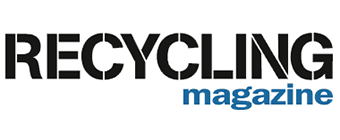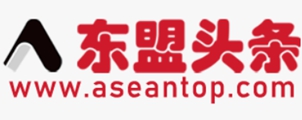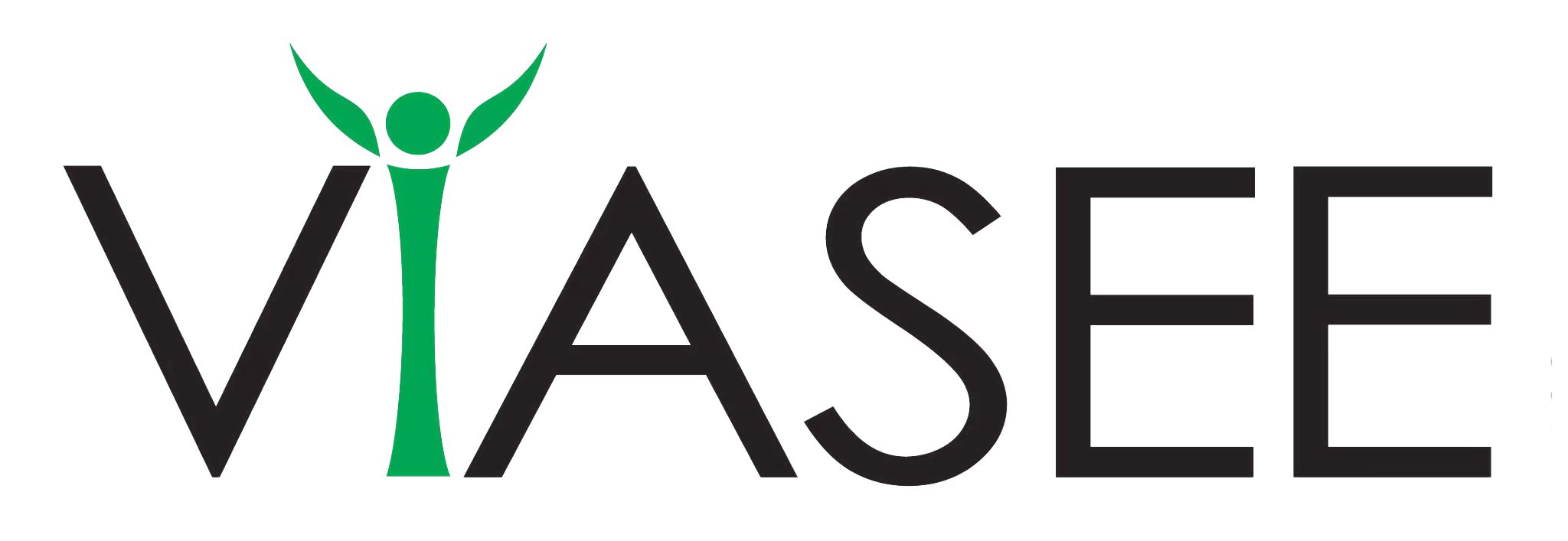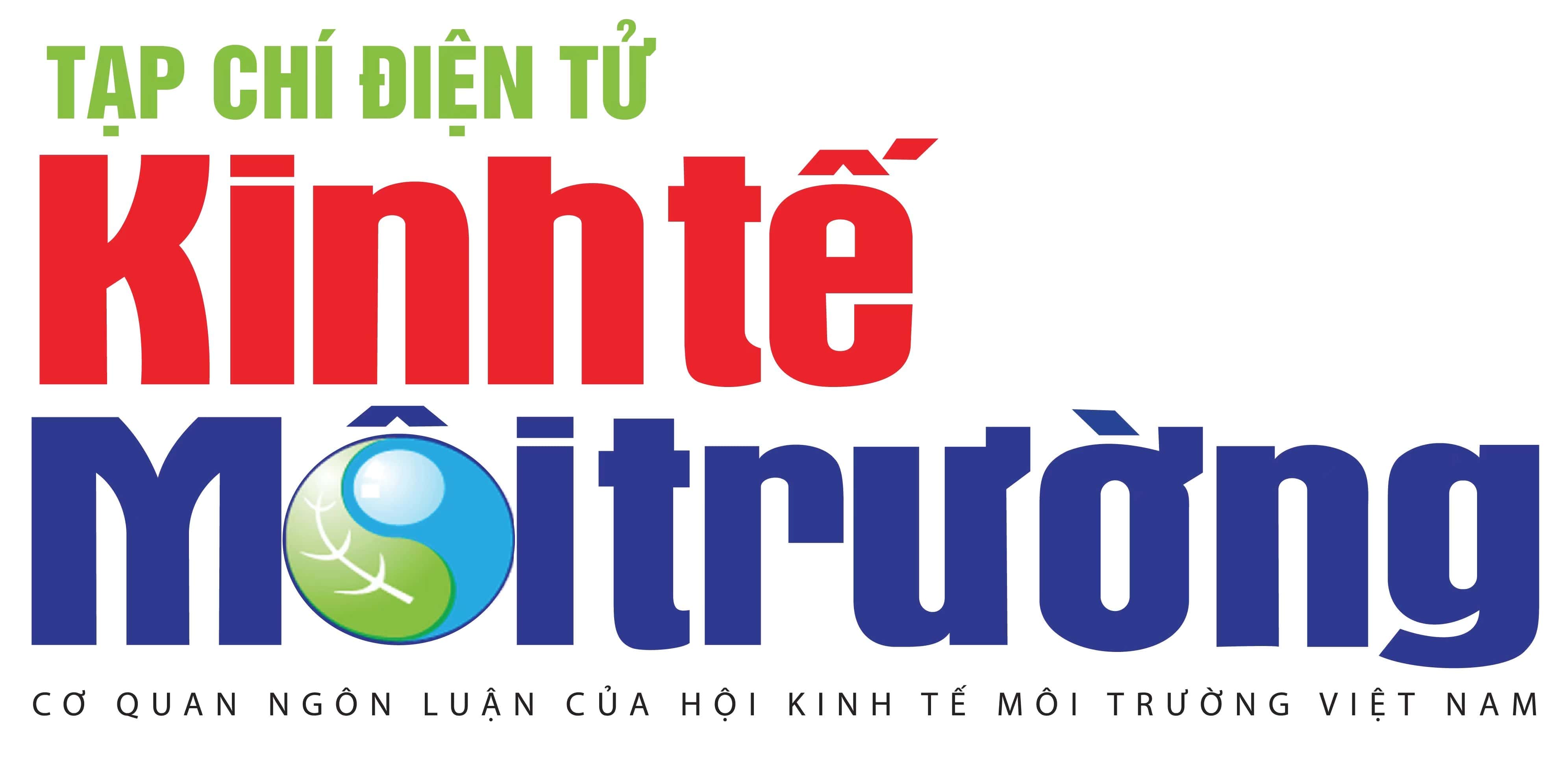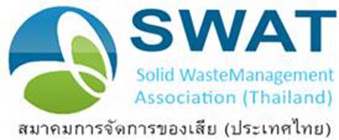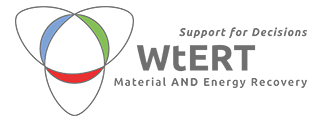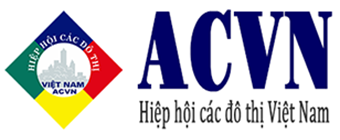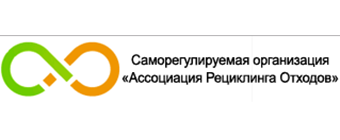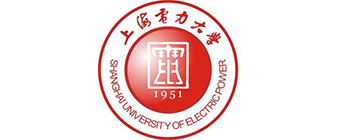Inaugural Asia Waste to Energy Congress 2012 was held successfully
in Pullman Shanghai Skyway Hotel from 15th-16th Nov 2012
2nd Annual Asia Waste to Energy Congress 2013 was held successfully
in Pullman Shanghai Skyway Hotel from 24th-25th Sep 2013
3rd Annual Asia Waste to Energy Congress 2014 was held successfully
in Renaissance Beijing Capital Hotel from 22nd-23rd Oct 2014
4th Annual Asia Waste to Energy Congress 2015 was held successfully
in Pullman Shanghai Skyway Hotel from 24th-25th Sep 2015
5th Annual Asia Waste to Energy Congress 2016 was held successfully
in Pullman Shanghai Skyway Hotel from 28th-29th Sep 2016
6th Annual Asia Waste to Energy Congress 2017 was held successfully
in Pullman Shanghai Skyway Hotel from 30th Nov-1st Dec 2017
7th Annual Asia Waste to Energy Congress 2019 was held successfully
in Saint Regis Shen Zhen Hotel from 28th Jun-29th Jun 2019
8th Annual Asia Waste to Energy Week 2021 was held successfully
in Four Points Sheraton Guang Zhou Hotel from 27th-28th Sep 2021
Inaugural Asia Hazardous Waste Treatment Congress 2016 was held successfully in Pullman Shanghai Skyway Hotel on 27th Sep 2016
2nd Asia Hazardous Waste Treatment Congress 2017 was held successfully in Pullman Shanghai Skyway Hotel on 28th-29th Nov 2017
3rd Asia Hazardous Waste Treatment Congress 2018 was held successfully in InterContinental Nanjing Hotel on 26th-27th Sep 2018
4th Annual Asia Hazardous Waste Treatment Congress 2019 was held successfully in The Sofitel Nanjing Galaxy Hotel on 7th-8th Nov 2019
5th Annual Asia Hazardous Waste Treatment Congress 2020 was held successfully in Hilton Jinan South Hotel on 24th-25th Sep 2020
Asia Food Waste Treatment Congress 2019 was held successfully in Saint Regis Shen Zhen Hotel on 26th June 2019
ASEAN Food Waste Treatment Congress 2023 was held successfully in Hilton Sukhumvit Bangkok Hotel on 16th Oct 2023
Asean Waste to Energy Week 2023 was held successfully in Hilton Sukhumvit Bangkok Hotel on 18th-20th Oct 2023
The Broaders 20th Waste Event Will be Scheduled on 14th-15th Mar 2024 in Saigon Vietnam
ASEAN Waste to Energy Week 2024 Event Background
Southeast Asia¡¯s urban population is projected to rise to nearly 400 million by 2030, requiring significant investment in waste management to cope with the increase in garbage. The growth in electricity demand is also prompting countries to more than double generation capacity by 2040.The Southeast Asia Waste-to-Energy Market size is expected to grow from USD 3,325.87 million in 2023 to USD 6,070.97 million by 2028, at a CAGR of 12.79% during the forecast period (2023-2028).According to data collected, there are more than 100 waste-to-energy projects recently constructed, being built or planned across three major South East Asian markets¡£
Vietnam is one of the global leaders in rice, coffee, and other agricultural and wood exports. The annual residues from the agricultural and wood industry have a potential biomass resource of about 118 million tons/year, including about 40 million tons of rice straw, 8 million tons of rice husk, 6 million tons of bagasse, and over 50 million tons of coffee husks, shells, and wood waste. However, the electricity generated from biomass in Vietnam is still very limited compared to the potential resource. Only 516 MW was generated in 2021 mainly by large sugar and timber mills. PDP 8 encouraged the electricity generated from biomass and waste. The plan envisages 2.3 GW (1.5% of total energy mix) or more (depending on technology and solution efficiency) from biomass and waste to energy by 2030. The waste-to-energy and co-firing technology for coal thermal power plants, which enables replacing coal with biomass, has not been popular in Vietnam.Huge agricultural residue resource in Vietnam is being dumped and burned as wastes, causing environmental pollution.agricultural production in Vietnam annually generates 79 million tonnes of agricultural residues, mainly including rice husk and straw, corn plants, corn cobs, cassava plants, coconut and sugarcane fibres. Residues of wood processing factories are around 5.3 million tonnes.
For agri-MSEs, switching to a cleaner and cheaper source of energy has become an urgent need. A proper biomass-based energy technology which could transform agricultural residues into fuel for heat generation will not only meet the need, but also contribute to reducing rural pollution. Although several biomass energy equipment models have been introduced to the Vietnam market, none of them have been widely adopted by businesses. Even the government has policies to encourage investments in biomass energy, they have not achieved strong buy-in from investors. The root cause of the situation is lack of biomass technology design and comprehensive solutions that are tailored to the scattered dispersal of biomass sources in Vietnam and to the financial and technical capacity of local enterprises.
Vietnam generates approximately 76,000 tons of solid waste daily, to increase by 10-16 percent annually due to rapid urbanization and population growth. About 85 percent of the waste generated is landfilled without pre-treatment, 80 percent of which is unclean and pollutes the environment. Therefore, there is a need to explore alternative MSW management options, such as Waste-to-energy (WtE), which can reduce the volume of waste sent to landfills, recover valuable resources, and generate electricity or heat from waste. The Waste-to-energy (WtE) market in Vietnam is relatively small but has significant growth potential.The potential for energy recovery from solid waste in Vietnam is approximately 1,400 megawatts (MW) per year, which can contribute to the country¡¯s renewable energy targets and energy security.The application of waste-to-energy technology solutions is still modest.Despite the country¡¯s large untreated urban solid waste of around 25 million tons/year, the waste-to-energy technology solution is still of very limited use in Vietnam. Thus, most of the waste still ends up in landfills. The new Environment Law (2020) is enforcing a sustainable treatment for solid waste. Waste-to-energy (WtE) technology is considered a key solution in the coming years. The country has currently four major WtE plants of which two are in operation (11 MW plant in Can Tho City and 15 MW phase 1 of a total 73MW planned plant in Hanoi) and two are in construction (35 MW plant in Hanoi and a 10 MW plant in BacNinh province). The WtE plant in BacNinh province applied Finnish technology while the three others applied mass incineration technology.
To achieve the objective of net zero emissions by 2050, Vietnam needs not only significant capital but also efficient technology and know-how across the sector¡¯s spectrum, from efficient solutions for the effective development of waste to energy,enables efficient operation of the domestic energy market and with neighboring countries. International investors and technology providers are working with the government of Vietnam to meet the needs of the country¡¯s energy development.
Director of the Department of Natural Resources and the Environment calling for investment in WTE that with the annual growth rate of 5 percent per annum, total domestic garbage in the city would reach 13,000 tons a day by 2025.
Solid industrial waste would increase by 6 percent per annum, hazardous waste 8 percent and medical solid waste 10 percent. In the face of increased amount of waste, the city needs to call for more investment in waste treatment projects and change treatment technology. Burning waste to generate electricity is now the focus because of its great advantages: it reduces the need for land for burying waste and mitigates negative impact on the environment. In the immediate time, the city needs 2-3 more plants which burn domestic garbage to generate electricity, one plant to burn hazardous waste and one to treat medical waste. The municipal authorities have also asked owners of existing waste treatment plants to shift to WTE technology, hoping that the city will achieve 200 MW from the WTE plants by 2030.
In reply to the call for investment, investors said they want the city to offer favorable conditions, so they can feel secure about pouring money into the projects. The investors want assurances from the local authorities to provide enough waste to treat; to raise the electricity purchase price related to WTE projects; long-term land use rights for up to 49 years; and incentives in corporate income tax and exemption from tax on equipment imports. They have also have proposed including a commitment to buy electricity for more than 20 years.
Hanoi,HCMC accelerate progress of waste-to-energy plants
Hanoi will expedite the progress of the waste-to-energy plant to ensure the incineration of the entire daily waste quantity of 5,500 tons deposited at the Nam Son landfill.
According to the official, Hanoi is currently carrying out waste-to-energy projects in the western and southern areas of the capital to redirect waste transportation and alleviate pressure on the Nam Son landfill. Furthermore, the Seraphin waste-to-energy plant, situated in Son Tay Town, is projected for completion by late 2023, and is set to commence operations in early 2024 with a daily incineration capacity of around 2,000 tons. This capacity essentially fulfills the waste processing requirements within Hanoi.
In the meantime,Ho Chi Minh City is Vietnam¡¯s biggest city and generates the largest volume of waste - 9,300 tonnes a day.The city stipulates that waste-treatment facilities need to generate electricity from the waste besides certain other conditions and pays 21 USD per tonne for treatment.To further support this, it has fixed a rate of 10.05 cent/KWh for the electricity generated from waste, higher than for solar and wind energy.In accordance with a solid waste treatment scheme for Hanoi by 2030, with vision until 2050, the capital would have 17 solid waste treatment facilities in total. HCMC is currently engaged in five projects aimed at converting waste treatment technology into waste-to-energy solutions¡£
HCMC is actively soliciting investment for the establishment of a solid waste treatment and energy recovery facility within the Northwest Urban Solid Waste Treatment Complex. This initiative is being pursued under a Public-Private Partnership (PPP) framework and is currently at the stage of evaluating the Pre-Feasibility Study Report for the PPP project.
Senate President Juan Miguel Zubiri has filed a bill seeking to establish a national energy policy and regulatory framework for facilities using waste-to-energy (WTE) technologies that would address solid waste management problems, and provide an alternative source of energy.In his Senate Bill (SB) 1746, or the ¡°Waste to Energy Act,¡± Zubiri noted that as the country develops, the population increases rapidly along with more improvements in our way of life, increasing the volume of waste created.Citing the assessment of the Environment and Management Bureau, the country is projected to generate 92 million tons of waste from 2022 to 2025.¡°Unfortunately, our solid waste disposal system is yet to keep up with the continuously increasing amount of household and domestic wastes that we produce. This bill seeks to help address our solid waste management problems by encouraging the development of environmentally sustainable innovations in the recovery, conservation, processing, treatment, and disposal of solid waste by using WTE technologies,¡° Zubiri said in his explanatory note.According to the Senate leader, WTE uses various technologies to convert non-recyclable waste materials into usable heat, electricity, or fuel through a variety of processes.¡°That way, not only would we be able to prevent our landfills from being filled up, but we can actually harness usable energy from non-recyclable waste,¡± he said.¡°The bill will also address the problem of limited land in many local government units (LGUs), particularly in our island provinces or municipalities, which makes it difficult for them to provide for appropriate sanitary landfills,¡± Zubiri said.
Under the proposed measure, WTE will be classified as another renewable energy resource, and WTE facilities will serve as a solid waste management facility and an energy production facility.To protect the environment, safeguards will be provided in the proposed measure to make sure that the innovation will not be at the cost of health or environmental safety.
SB 1746 mandates the respective roles of the Department of Energy (DOE), Department of Environment and Natural Resources (DENR), Department of Health (DOH), LGUs, and the National Solid Waste Management Commission (NSWMC) in the effective implementation of this Act.It also provides penalties for various violations committed under the measure, ranging from suspension to dismissal from the service, as well as fines of up to PHP2 million and prison terms of up to six years for LGU and government agency officials.Meanwhile, penalties for individuals found violating this Act shall be penalized with fines not less than PHP1 million, and imprisonment of up to three years.An amount of PHP15 million for the DOE; PHP300 million for the DENR; PHP15 million for the DOH; and PHP 27 million for the NSWMC, shall be charged from their current respective funds for the initial implementation of this Act.Amounts necessary for the sustainable implementation of this Act shall be included in the Annual General Appropriations Act.
In 2016, Bangkok opened its first waste-to-energy incinerator in the district of Nong Khaem, turning up to 500 metric tons of solid waste into electricity every day.For Thailand, ranked as the fifth top source of oceanic plastic pollution in the world, addressing waste is a key concern. In 2021, the country produced 24.98 million metric tons of solid waste, of which only 16% was recycled back into the supply chain, according to the country¡¯s Pollution Control Department (PCD). The waste problem has become so pressing that Thailand has set it as part of its national agenda, with waste-to-energy increasingly being pushed as a solution.¡°The easiest and most suitable way is turning this waste into energy,¡± said Pinsak Suraswadi, director-general of PCD. ¡°Moreover, the projects will help cut down greenhouse gas.¡±Thailand, meanwhile, plans to build 79 waste-to-energy plants in the upcoming years, with a total installed capacity of 619.28 MW, according to PCD. Each will have at least a 20-year operating contract, many built using international technology or finance. In October, Thailand added waste-to-energy as part of its national carbon crediting system.
Millions of tons of waste especially plastic are dumped in the ocean every year.Upon such concerns and the future disaster mitigation,Indonesian government initiates to encourage the development of waste management by constructing Waste-to-Energy Power Plants/Pembangkit Listrik Berbasis Sampah or Pembangkit Listrik Tenaga Sampah Kota referred to as ¡°PLTSa¡± projects. This project is an environmentally friendly way to overcome waste problems as well as to generate electricity for the nation.On September 2018,the World Bank,on its website,acknowledged that in Indonesia,a $100 million loan supports the $1 billion national program to reform waste management practices for around 70 participating cities, affecting around 50 million people.
Indonesian Government supports the PLTSa projects by issuing a Presidential Regulation Number 35 of 2018 on Accelerated Construction of Waste-to-Energy Power Plants based on Environmentally Friendly Technologies (¡°Regulation¡±).In the Regulation, Indonesian government sets out several regions that have to accelerate the PLTSa construction, as follows: (1) DKI Jakarta Province; (2) Tangerang City; (3) South Tangerang City; (4) Bekasi City; (5) Bandung City; (6) Semarang City; (7) Surakarta City; (8) Surabaya City; (9) Makassar City; (10) Denpasar City; (11) Palembang City; and (12) Manado City. Local government may partner with business entities selected through public procurement mechanism.Business entities that have been selected (¡°PLTSa Developer¡±) must have environmental and electricity supply licence. PLTSa Developer is facilitated in the issuance of development/construction principle licenses. The Minister of Environment and Forestry, the Minister of Energy and Mineral Resources, the Minister of Public Works and Public Housing, the Minister of Agrarian Affairs and Spatial Planning/Head of National Land Agency, Head of Investment Coordinating Board, minister as well as head of other agencies and the relevant Local Government in accordance with their authority shall provide supports in licensing and non-licensing matters as well as the simplification needed by PLTSa Developer.Alike the traditional IPP model, PLN will be the purchaser of the electricity produced by the PLTSa developer, in which the tariff of 20 MW (twenty megawatts) is USD 13,35 cent/kWh, while the tariff for electricity of more than 20 MW (twenty megawatts) is calculated as follows:Purchased Price (USD cent/kWh) = 14,54 ¨C (0,076 x the amount of PLTSa capacity sold to PT PLN).It is way higher than The Main Cost Amount/Besaran Biaya Pokok (BBP) National Plant of 2017 which is amounting to USD 7,66 cent/kWh. The above-mentioned tariff is also higher than other types of renewable power plants.The acceleration of PLTSa construction is funded by Regional Budget which can be supported by the State Budget. The Indonesian government will support the land acquisition process in accordance with the law of land acquisition for public interest.
May 6, 2021£¬President Joko Widodo inaugurated the Waste-to-Electric Energy Processor (PSEL) in Surabaya.The government aggressively continues to encourage acceleration of waste-to-energy processing facility with eco-friendly technology,especially in 12 cities stipulated within Presidential Regulation No. 35 of 2018.Waste Handling Director at the Environment and Forestry Ministry Novrizal Tahar informed that his ministry along with other government institutions intensively continue to conduct assistance and evaluation, especially of these 12 cities.These 12 cities comprise Jakarta, Tangerang, South Tangerang, Bekasi, Bandung, Semarang, Surakarta, Surabaya, Makassar, Denpasar, Palembang, and Manado.There is one Waste-to-Electric Energy Processor (PSEL), located in Surabaya and inaugurated by President Joko Widodo in 2021, that is already active.The ministry coordinates with other institutions, such as the Coordinating Ministry for Maritime Affairs and Investment, Coordinating Ministry for Economic Affairs, National Development Planning Agency (Bappenas), and Energy and Mineral Resources Ministry to expedite PSEL development.The government also continues to provide assistance to regional governments and other parties to drive the acceleration of PSEL.Earlier, during the Environmental Fund Management Agency's (BDPLH's) National Meeting here on December 21, President Joko Widodo urged the agency to prioritize funding for waste management and mangrove rehabilitation.Specifically, the president brought up the waste management project Sunter Intermediate Treatment Facility (ITF) in Jakarta that had yet to be completed.When the Sunter ITF is completed, it is estimated to process 720 tons of waste per year and produce 35 MW of electricity per day.Southeast Asia¡¯s largest country and estimated as the world¡¯s third-largest plastic polluter.rapid economic growth and increased production of single-use plastics by global brands has overwhelmed the country¡¯s waste management system, leading to clogged rivers and plastic waste impacting local marine wildlife.Thus far, there are at least 17 projects proposed for Indonesia, with a total capacity of at least 134.9 MW. One is already operating in the Jakarta satellite city of Bekasi, along with another in the country¡¯s second-largest city, Surabaya.Indonesia included incineration in the country¡¯s 2021 updated Nationally Determined Contribution (NDC), its emissions reduction pledge under the 2015 Paris climate agreement, as a way to cut greenhouse gas emissions from the waste sector.
Waste to energy (WtE) projects are set to go some way towards meeting the Indonesian government's ambitious renewable energy targets notwithstanding the far-reaching effects of the Covid-19 pandemic.'Nationally strategic' WtE projects in Legok Nangka, Bandung and South Tangerang, each with 10-20MW of offtake power capacity, are expected to be tendered in the coming year while the Indonesian Minister of Energy and Mineral Resources (MEMR) announced a further 12 plants, with a combined capacity of 234MW, in February 2020, just before the shutdown.
While the timetable for delivery of these plants is likely to be disrupted by the pandemic a healthy pipeline of projects, coupled with a number of recent regulatory reforms, means the long-term future of WtE projects in Indonesia remains bright. Indeed, market sounding activities for a proposed WtE facility in Bali took place in November 2020 and steps continue towards implementation of a number of WtE tender opportunites in Semarang and Jakarta for 2021-22.most recently by MEMR Regulation No. 4 of 2020 (the 2020 Regulation). The 2020 Regulation allows procurement to take place by way of direct appointment instead of direct selection in limited circumstances; does away with the mandatory transfer requirement; and requires PLN to prioritise the acquisition of electricity from renewable IPPs, without the caveat of associated restrictions on generation capacity.
WTE plants play a crucial role in managing solid waste in Malaysia and at the same time be able to generate electricity to be sold to the off-taker, usually the utility, or to be used internally to operate the WTE plants.The Ministry of Housing and Local Government of Malaysia has planned to develop six (6) WTE plants across Malaysia by 2025. In exploring more integrated waste management solutions, the Government, through Budget 2020, has extended the Green Technology incentive to 31 December 2023. The incentive is expected to encourage firms to rethink their approach by incorporating waste management techniques that include collection, storage, composting and disposal with other core recycling, recovery or waste treatment activities.Apart from that, Malaysia, as part of its commitment under the Paris Agreement, is targeting to cut carbon intensity against GDP by 45% by 2030 compared to 2005 levels. This can be partially achieved through converting waste into energy. producing electricity which will also contribute towards a greater share of the national electricity generation mix under the renewable energy category.Prior to the COVID-19 pandemic, Malaysia was reportedly generating Municipal Solid Waste (MSW) amounting to around 37,560 tonnes per day in 2019, which is equivalent to approximately 1.17 kg per person per day. Food waste accounts for 44.5% of the total MSW (Figure 1). MSW in Malaysia is projected to have a 3-5% increase in annual generation rate.In Malaysia, close to 78% of the population concentrate in cities. In Kuala Lumpur, the capital of Malaysia, alone, 3,000 tonnes of food waste is generated every day.The Malaysian authorities are facing strenuous challenges in food waste handling and treatment. Food waste imparts the environmental issue due to its improper separation with municipal solid waste. According to research, the majority of waste or trash from households or commercial buildings is collected and sent to landfills, where it is eventually buried. Such treatment casts the concern of creating harmful greenhouse gasses, namely methane, that can worsen global warming.In Malaysia, most of the landfills are open dumpsite and 89% of the collected MSW ends up in landfills. According to the National Solid Waste Management Department, most of the generated solid waste in Malaysia is disposed directly to landfills, causing pollution and scarcity of land to accommodate an ever-increasing demand for space for landfill construction. 89% of MSW in Malaysia enters directly into landfills with minimal treatment, whereas only 1% of the total incoming MSW receives proper treatment. In Malaysia, 50% of landfills are open dumping sites; 30% use-controlled tipping; 12% are controlled landfills with daily cover; 5% are sanitary landfills without leachate treatment facility; and the other 5% are sanitary landfills with leachate treatment. Within the coming 10 years (by 2030), over 80% of the Malaysian open dumping landfill sites are to be shut down as they reach full capacity [8]. The major MSW fractions generated in Malaysia are 45% organic material, 13% plastics, 12% diapers, 9% paper, 3% glass, 3% metal and others.Organic waste represents the largest portion of the total solid waste produced by Malaysians therefore making landfills a potential source of landfill gas (LFG). Nevertheless, decommissioning a landfill involves the process of obtaining other lands and is an environmentally challenging process. This will make land scarcer in the future. Employing waste-to-energy solutions can solve two problems at once, namely the demand for more energy and the continuous increase in MSW generation. Hence, waste is no longer an undesired product from the society but a new resource by treating non-recyclables and non-reusables from MSW to generate a substantial amount of energy for urban use while preserving scarce lands.Additionally, proper solid waste management can help preserve Malaysia's rivers and water bodies. There are almost 1800 rivers in Malaysia. Sadly, more than half of these rivers have been polluted and destroyed. Improper solid waste management contributes greatly to river pollution.The Malaysian authorities are studying various solutions that can generate energy from MSW through WTE treatment namely thermal, biological and landfilling through LFG. Malaysia hopes to play a positive role internationally in offsetting the world¡¯s carbon emission by generating electricity from waste and to push forward a greater share of RE in the national electricity generation mix.In Malaysia, households are the main source of total solid waste generation, which accounts for 65% compared to commercial and institutional at 28% and industry at 7%.Therefore, WTE via thermo-chemical waste treatment pathways like incineration and gasification are believed to play a crucial role in managing household solid waste by reducing the volume of MSW by up to 95% before entering landfills.In Malaysia, the use of incineration as WTE is only present in a very limited quantity at a small scale. A total of 80%¨C95% of MSW volume can be reduced by incineration. Back in 2011, several incineration projects with the expenditure of RM 187.74 million had been commenced by the Ministry of Local Government and Housing (MHLG) Malaysia to manage MSW. These included five units of small-scale incinerators of rotary kiln type that were erected in five tourism spots (Table 3): Pulau Langkawi (100 ton/day), Pulau Labuan (60 ton/day), Cameron Highlands (40 ton/day), Pulau Pangkor (20 ton/day), and Pulau Tioman (10 ton/day).
Singapore's growing population and booming economy have contributed to a 7-fold increase in the amount of solid waste disposed from 1,260 tonnes a day in 1970 to a peak of 8,741 tonnes a day in 2021.Solid waste management in Singapore begins at homes and businesses. Waste that is not segregated at source is then collected and sent to the waste-to-energy plants for incineration. Incineration reduces the volume of solid waste by about 90% and energy is recovered to generate electricity.The ash residues from the incineration process are sent to the Tuas Marine Transfer Station (TMTS) and, together with non-incinerable waste, are barged over to Semakau Landfill for disposal.
Myanmar¡¯s first-ever Yangon Waste to Energy Plant has been built with minimal environmental impact, and the plant generates 760 kilowatts of electricity per day, according to the Yangon City Development Committee (YCDC).
The Kingdom of Cambodia currently produces about four million tonnes of rubbish each year, according to the Ministry of Environment.The environment ministry said Cambodia produces more than 10,000 tonnes of waste per day, with Phnom Penh alone accounting for between 2,700 and 3,000 tonnes.Out of the daily tonnage of garbage, food waste makes up 57 per cent; plastic waste about 18 per cent; paper waste six per cent; rubber and similar wastes about 0.2 per cent. Grass, wood, fabric and stone waste amount to 18 per cent.Heng Kimhong, research and advocacy programme manager at the Cambodian Youth Network (CYN), supported the scheme, saying that it allows Cambodia to do its best to manage waste, protect the environment and accelerate trash collection to prevent garbage being strewn about the streets.He asked that the government accelerate the scheme and encourage and boost investment in recycling garbage into energy-producing fuel because waste management in Cambodia needs improvement.The Ministry of Mines and Energy is preparing to develop a project converting waste to energy at dumpsites in Phnom Penh.The project was unveiled for discussion at a meeting held last week led by H.E. Suy Sem, Minister of Mines and Energy, with representatives from the Asian Development Bank (ADB).During the meeting, the ministry permitted a study to select appropriate options and to determine the composition of the waste at a landfill in Dangkor district, Phnom Penh.
The project is being conducted with technical support and advice from ADB and a firm named Infrastructure of Asia Singapore, according to the ministry.The waste-to-energy project comes at a time when the Cambodian government is preparing a national policy on waste management as the growth of waste steadily increases.According to a report from the Ministry of Environment, Phnom Penh produces around 2,800 tons of waste per day.Victor Jona, General Director of Energy at Ministry of Mines and Energy, said that the project on converting waste to energy is important given that it will solve waste management problems and helps create new power sources.He added that the ministry continues to encourage investment in waste-to-energy projects, as dozens of investors have expressed interest in the project.
The World Bank Board of Executive Directors approved a $60 million International Development Association credit to support Cambodia¡¯s improvement of solid waste and plastic management. The project will be co-financed by a grant from the PROBLUE Trust Fund in the amount of $3 million.Economic growth, urbanization, and tourism have led to a substantial increase in solid waste and plastics use in Cambodia over the years. As a result of low collection rates and inadequate treatment and disposal of waste, the dumping of waste and plastics in the environment and waterways, street littering, and the practice of burning have become widespread. In addition, inadequate regulatory frameworks, policies, and enabling conditions are limiting the effectiveness of waste management efforts.¡°The government has placed improvement of solid waste and plastic management increasingly high on the national agenda as stated in the Municipal Solid Waste Management Policy 2020-2030,¡± said Samdech Krolahom Sar Kheng, Cambodian Deputy Prime Minister and Minister of Interior. ¡°Supporting implementation of Sub-decree No. 113 on solid waste management to enhance the effectiveness, transparency, and accountability of waste services and management, and protect public health, environmental and landscape aesthetics in Cambodia is an important priority.¡±The Cambodia: Solid Waste and Plastic Management Improvement Project will support the Government of Cambodia¡¯s efforts to strengthen institutional capacity for solid waste and plastic management at the national and sub-national level, enhance the performance of the private sector engaged in waste services, and improve waste fee systems to support improved solid waste operations that are environmentally, financially, and socially sustainable. The project design incorporates qualifying criteria for municipalities for participation in the project and to ensure the readiness of participating municipalities to sustain investments.¡°Improved solid waste and plastic management is critical for Cambodia¡¯s economic and social development, including its tourism sector,¡± said Maryam Salim, World Bank Country Manager for Cambodia. ¡°Marine plastic pollution is a transboundary issue, and this will support marine plastic solutions at the national level. This project will also support greater access for households to regular waste collection, and with increased landfill, recycling, and composting capacity, there will be positive impacts for public health, the environment, and tourism.¡±The project will be implemented by the Ministry of Interior, the Ministry of Environment and the Ministry of Public Works and Transport together with the relevant sub-national administrations.
The government of Laos and a private company in Vientiane have signed an agreement to study the possibility of using waste to generate energy across the country.KPL reports that the cooperation agreement was signed between the Ministry of Energy and Mines and the Vientiane Waste Management Company (VWM) to study the energy efficiency of waste to generate power.
Authorities believe that harnessed energy from waste could then be used to develop the infrastructure of electric vehicle charging stations, and power electric vehicles to transport waste in Vientiane capital, Luang Prabang, Khammouane, Savannakhet, and Champasack provinces.The feasibility study is based on aspects like the economic-technical study, economic-financial analysis, supply chain in waste collection, disposal, transportation, and access to community waste sources, according to the report.Chantho Mailattanapeng, Deputy Director General of the Institute of Renewable Energy Promotion of the Ministry of Energy and Mines, and Khamla Nakavong, Director of Vientiane Waste Management Company, witnessed the signing of the agreement.
This cooperation between the public and private sectors will assist the government in planning and managing effective waste disposal, reduce the investment of public funds, as well as improve human resources skills for similar work.
Brunei plans to build a waste incineration plant that can process 800 to 1,000 tons of waste per day to generate electricity, said Dato Mohd Juanda, the country's minister of development.
According to the local daily Borneo Bulletin on Sunday, the minister said during the elaboration of his ministry's annual budget at the Legislative Council meeting that the waste incineration plant would achieve more resilient and efficient solid waste management and stress the need for a much smaller area for landfills.
Key Features
How to shorten the project preliminary examination planning, environmental assessment, feasibility study, approval,land approval,report construction land acquisition,demolition and resettlement coordination time
How to coordinate finance,development and reform,land,planning,environmental protection,legal departments efficiently
How government and investors resolve the conditions for cooperation in fairness and impartiality, major legal risks, and operational maintenance effectively
How to design a YIMBY waste incineration project, process technology, project building standard, waste disposal service fee
How to build high standards, high quality waste incineration power generation project
How to leverage cloud computing, digitization, big data, artificial intelligence, and Internet of Things technologies to improve combustion power generation efficiency and reduce flue gas emissions
Waste incineration power generation projects operational excellent management
Waste incineration power plant equipment fault prediction and maintenance,clean compliance incineration, improve enterprise economic benefits
How to assist waste incineration power plants to treat exhaust gas(hcl sox nox dioxin mercury pm), waste water,slag,bottom ash, fly ash
How to assist decision makers in urban msw management departments to sort and collect transport work well
Debate the future of the emerging waste conversion market with industry leaders
Benefit from technical expertise insight from some of the industry¡¯s leading technology providers
Network and do business with the leading WtE projects owners in Asean countries
Discover new commercial opportunities in 2025 and beyond
Position your company at the forefront of the emerging WtE industry in Asean countries |


















































